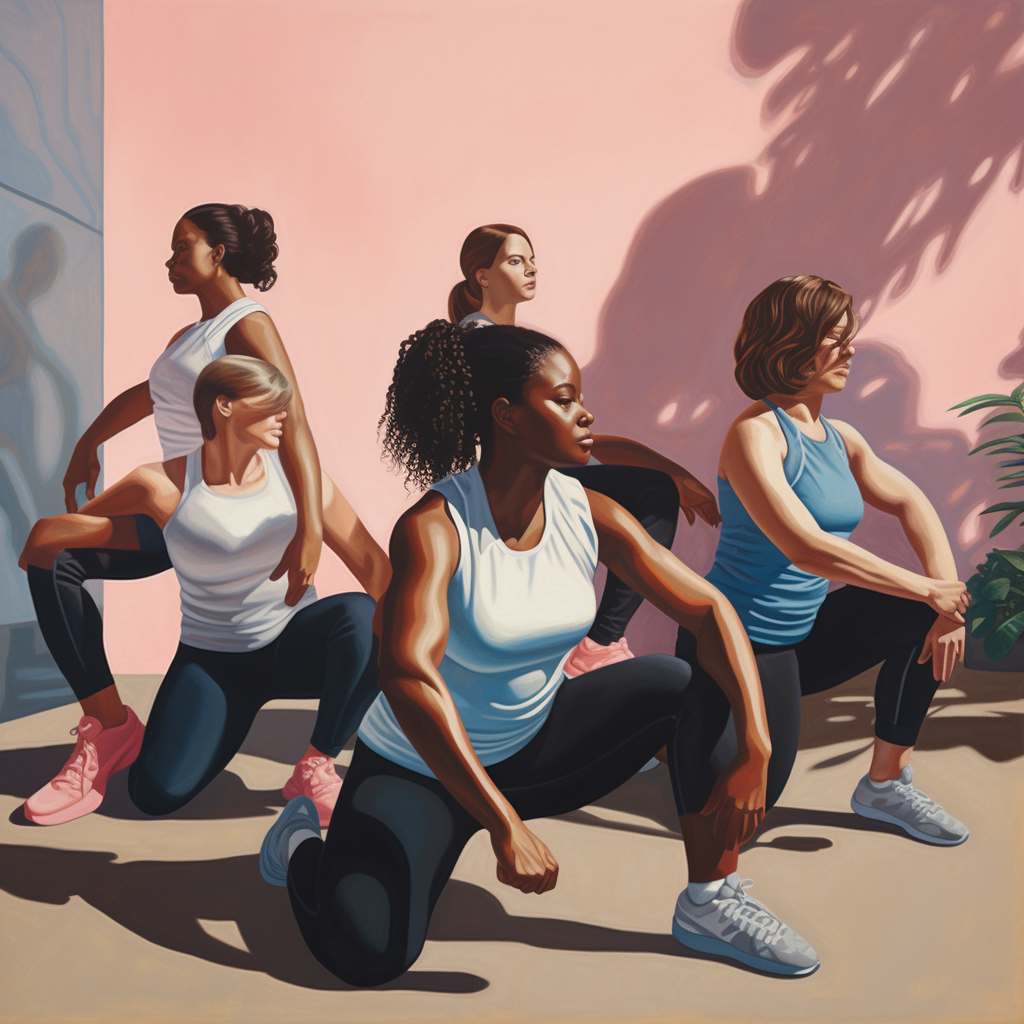Building muscle and gaining strength require more than just intense workouts; adequate recovery is equally crucial. In this article, we will delve into four essential subtopics that can enhance your muscle recovery process: hydration, dynamic stretching, cool down, and rest and relaxation. By incorporating these practices into your fitness routine, you can optimize your recovery and maximize your results.
Hydrate
Proper hydration is often underestimated but plays a fundamental role in muscle recovery. During exercise, your body loses water through sweat, which can lead to dehydration if not replenished. Dehydration can impair your performance, increase muscle soreness, and hinder the recovery process.
To support muscle recovery, it’s essential to drink enough water before, during, and after your workouts. Aim to consume at least 8-10 glasses (64-80 ounces) of water daily, or more if you engage in intense physical activity or exercise in hot environments. Additionally, consider incorporating electrolyte-rich fluids or sports drinks to replenish lost minerals and enhance hydration.
Remember to listen to your body’s signals and drink water even when you’re not feeling thirsty. Staying properly hydrated will promote efficient nutrient delivery to your muscles, aid in the removal of waste products, and support optimal muscle repair and growth.
Dynamic Stretching
Dynamic stretching is a form of stretching that involves active movements to warm up your muscles and prepare them for exercise. Unlike static stretching, which involves holding a position for an extended period, dynamic stretching focuses on fluid and controlled movements that mimic the actions you’ll perform during your workout.
Dynamic stretching before your workouts can improve muscle flexibility, enhance joint range of motion, and activate the muscles you’ll be targeting. This pre-workout routine can increase blood flow to the muscles, deliver oxygen and nutrients, and improve overall muscle performance.
Incorporate dynamic stretches such as leg swings, arm circles, walking lunges, and high knees into your warm-up routine. Perform each movement for 10-15 repetitions, gradually increasing the range of motion as your muscles loosen up. Dynamic stretching primes your muscles for the upcoming workout, reduces the risk of injury, and sets the stage for effective muscle recovery post-exercise.
Cool Down
The cool-down phase of your workout is just as important as the warm-up. Cooling down allows your body to gradually transition from a state of intense activity to a resting state, promoting muscle recovery and preventing post-workout muscle tightness and soreness.
After completing your workout, allocate 5-10 minutes for a cool-down routine. This can involve low-intensity exercises such as walking or slow jogging, gentle stretching, or foam rolling. The aim is to gradually decrease your heart rate, allow for the removal of metabolic waste products, and promote the delivery of oxygen and nutrients to your muscles.
Focus on stretching the major muscle groups you targeted during your workout, holding each stretch for 15-30 seconds. Utilize a foam roller to release any tight or knotted muscles, aiding in muscle recovery and preventing the buildup of scar tissue.
By incorporating a proper cool-down routine, you enhance blood circulation, facilitate the removal of lactic acid and metabolic byproducts, and promote muscle relaxation. This sets the stage for faster muscle recovery and prepares your body for subsequent workouts.
Rest & Relax
Rest and relaxation are crucial components of muscle recovery. Rest days provide your muscles with the necessary time to repair damaged tissues, replenish energy stores, and grow stronger. Neglecting rest days can lead to overtraining, increased injury risk, and decreased performance. Pay attention to your body’s signals, such as excessive fatigue, persistent muscle soreness, or declining performance, as they indicate the need for more rest. Remember that rest is not a sign of weakness but a vital aspect of long-term success. Additionally, incorporating relaxation techniques like meditation, deep breathing exercises, or gentle yoga can help reduce stress levels, which can hinder effective recovery. Prioritizing quality sleep, aiming for 7-9 hours each night, allows your body to release growth hormone for tissue repair and regeneration. By embracing rest and relaxation, you create an optimal environment for muscle recovery and support your overall well-being on your fitness journey.
Final Thoughts: Muscle Recovery Tips
Optimizing muscle recovery is crucial for achieving your fitness goals and maintaining a healthy body. By incorporating practices such as hydration, dynamic stretching, cool down, and rest and relaxation into your fitness routine, you can enhance your body’s ability to repair and rebuild muscles, prevent injuries, and improve overall performance. Prioritize proper hydration to support nutrient delivery and prevent dehydration. Include dynamic stretching in your warm-up to improve flexibility and activate muscles. Dedicate time for a cool-down to gradually transition your body to a resting state and promote circulation. Lastly, give yourself adequate rest and relaxation to allow for muscle recovery and overall well-being. By embracing these practices, you’ll optimize your recovery and maximize your results on your fitness journey.
To learn more, visit Train Fitness.
More Articles
Transformative Discipline: Exploring the Principles of 75 Hard
Recently, my friends and I were thinking of ways to start the new year positively, and 75 Hard will put us to the test in an effective way. Setting off on a path toward resilience and self-improvement frequently calls for more than just internal drive; it also calls...
The Best Full Body HIIT Workout You Can Do
Workouts involving full-body high-intensity interval training (HIIT) are a quick and easy approach to optimize your fitness progress. These workouts usually consist of a series of heart-pumping, intensive movements that target numerous muscle groups at once,...
Ab Workouts: Creating a Home Gym that Fits Your Lifestyle
Ab workouts are an important part of any fitness regimen because they target the core muscles that are crucial for stability, posture, and general strength. You can choose from a wide range of workouts to achieve a stronger core or a toned stomach. Engaging the...
Home Sweet Home Gym: Your Gateway to a Healthier Lifestyle
Picture this: no more rushing to the gym during peak hours, no waiting for your favorite machine, and no distractions from strangers. Instead, imagine a space where you can focus entirely on your fitness goals, set your workout schedule, and curate an environment that...
Mastering Back Exercises with Dumbbells
Dumbbell back workouts are a flexible and efficient way to improve your general strength, posture, and muscle growth. Dumbbells are a great addition to any exercise regimen, whether you're a back-health fanatic, an athlete, or just someone who enjoys working out....
The Fierce Flats
With our "Fierce Flat’s" blog, you'll be able to dive into the realm of lifting like never before. Forget about flashy kicks and high-tech soles; there's a new look in town. This blog will break down Converse and Vans' game-changing styles for all of your lifting...











